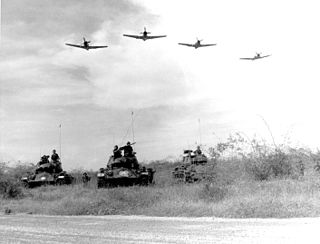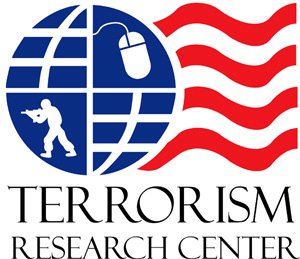Military tactics encompasses the art of organizing and employing fighting forces on or near the battlefield. They involve the application of four battlefield functions which are closely related – kinetic or firepower, mobility, protection or security, and shock action. Tactics are a separate function from command and control and logistics. In contemporary military science, tactics are the lowest of three levels of warfighting, the higher levels being the strategic and operational levels. Throughout history, there has been a shifting balance between the four tactical functions, generally based on the application of military technology, which has led to one or more of the tactical functions being dominant for a period of time, usually accompanied by the dominance of an associated fighting arm deployed on the battlefield, such as infantry, artillery, cavalry or tanks.

Combined arms is an approach to warfare that seeks to integrate different combat arms of a military to achieve mutually-complementary effects. According to the strategist William S. Lind, combined arms can be distinguished from the concept of "supporting arms" as follows:
Combined arms hits the enemy with two or more arms simultaneously in such a manner that the actions he must take to defend himself from one make him more vulnerable to another. In contrast, supporting arms is hitting the enemy with two or more arms in sequence, or if simultaneously, then in such combination that the actions the enemy must take to defend himself from one also defends himself from the other(s).

Close-quarters combat (CQC) or close-quarters battle (CQB) is a tactical situation that involves a physical fight with firearms involved between multiple combatants at quite short range. It can occur between military units, police/corrections officers and criminal elements, and in other similar situations. In warfare, it usually consists of units or teams of varying size engaging the target or attacking personnel with personal weapons within a distance of up to 100 meters, from proximity hand-to-hand combat to close-quarter target negotiation with usually automatic weapons. In the typical close combat scenario, the attackers try a very fast, violent takeover of a vehicle or structure controlled by the defenders, who usually have no easy method to withdraw. Because attacking and defending personnel, hostages/civilians, and friendly personnel can be closely intermingled, close-quarters combat demands a rapid assault and a precise implementation of lethal force. The operators need obvious, sufficient proficiency with their weapons, and the ability to make quick decisions in order to limit friendly casualties and raise the likelihood of operational success.
Aerial warfare is the use of military aircraft and other flying machines in warfare. Aerial warfare includes bombers attacking enemy installations or a concentration of enemy troops or strategic targets; fighter aircraft battling for control of airspace; attack aircraft engaging in close air support against ground targets; naval aviation flying against sea and nearby land targets; gliders, helicopters and other aircraft to carry airborne forces such as paratroopers; aerial refueling tankers to extend operation time or range; and military transport aircraft to move cargo and personnel. Historically, military aircraft have included lighter-than-air balloons carrying artillery observers; lighter-than-air airships for bombing cities; various sorts of reconnaissance, surveillance and early warning aircraft carrying observers, cameras and radar equipment; torpedo bombers to attack enemy shipping; and military air-sea rescue aircraft for saving downed airmen. Modern aerial warfare includes missiles and unmanned aerial vehicles. Surface forces are likely to respond to enemy air activity with anti-aircraft warfare.

Enfilade and defilade are concepts in military tactics used to describe a military formation's exposure to enemy fire. A formation or position is "in enfilade" if weapon fire can be directed along its longest axis. A unit or position is "in defilade" if it uses natural or artificial obstacles to shield or conceal itself from enfilade and hostile fire. The strategies, named by the English during the Hundred Years' War, use the French enfiler and défiler spoken by English nobility of the time.
Maneuver warfare, or manoeuvre warfare, is a military strategy which seeks to shatter the enemy's overall cohesion and will to fight.

The Terrorism Research Center (TRC) is non-profit think tank focused on investigating and researching global terrorism issues through multi-disciplinary collaboration amongst a group of international experts.
Deep operation, also known as Soviet Deep Battle, was a military theory developed by the Soviet Union for its armed forces during the 1920s and 1930s. It was a tenet that emphasized destroying, suppressing or disorganizing enemy forces not only at the line of contact but also throughout the depth of the battlefield.

Naval tactics and doctrine is the collective name for methods of engaging and defeating an enemy ship or fleet in battle at sea during naval warfare, the naval equivalent of military tactics on land.
Military swarming is a battlefield tactic designed to maximize target saturation, and thereby overwhelm or saturate the defences of the principal target or objective. On the other-hand, defenders can overcome attempts at swarming, by launching counter-swarming measures that are designed to neutralize or otherwise repel such attacks.
Military art is a field of theoretical research and training methodology in military science used in the conduct of military operations on land, in the maritime or air environments. Military art includes the study and application of the principles of warfare and laws of war that apply equally to the closely interrelated military strategy, operational art and tactics. Exercise of military art is highly dependent on the economics and logistics supporting the armed forces, their military technology and equipment, and reflects the social influences on the military organisation exercising military art. Often misunderstood due to its 19th-century perception as generally "including the entire subject of war", it is primarily, as the term implies, the expression of creative thinking on the part of the decision-makers in employing their forces, with the map of the area of operations as a veritable canvas, and the movement of forces commonly marked on the map with arrows, as brush strokes. Less imaginatively it was defined in France during the 19th century as
The art of war is the art of concentrating and employing, at the opportune moment, a superior force of troops upon the decisive point.
Defence in depth is a military strategy that seeks to delay rather than prevent the advance of an attacker, buying time and causing additional casualties by yielding space. Rather than defeating an attacker with a single, strong defensive line, defence in depth relies on the tendency of an attack to lose momentum over time or as it covers a larger area. A defender can thus yield lightly defended territory in an effort to stress an attacker's logistics or spread out a numerically superior attacking force. Once an attacker has lost momentum or is forced to spread out to pacify a large area, defensive counter-attacks can be mounted on the attacker's weak points, with the goal being to cause attrition or drive the attacker back to its original starting position.
Tactics, Techniques, and Procedures (TTPs) is an essential concept in terrorism and cyber security studies. The role of TTPs in terrorism analysis is to identify individual patterns of behavior of a particular terrorist activity, or a particular terrorist organisation, and to examine and categorize more general tactics and weapons used by a particular terrorist activity, or a particular terrorist organisation.
Interposing Tactics is tactical concept, developed under Terrorist Tactics, Techniques, and Procedures, to explain a tactical action where a small-scale action takes place between two combatants, where one manoeuvres into interposition or interjection within a tactical situation, and disrupts the action or activity, of the opponent.

A rhizome manoeuvre is a surprise attack in a built environment, made from an unexpected direction, such as through a wall or floor. It is a key concept in contemporary warfare tactics, techniques, and procedures.
Three-Dimensional (3D) Tactics Analysis, is a tactical analysis methodology under the concept of Terrorist Tactics, Techniques, and Procedures, and is related to Rhizome Manoeuvre. The approach is applicable to urban combat, and takes into account mass gatherings of people located in highly complex urban structures, incorporating features such as multi-level buildings, open spaces between buildings, crowd congregation points, and transport hubs.
Mimicking operations is a tactical concept, developed under Terrorist Tactics, Techniques, and Procedures, to explain a form of deception, commonly used by terrorists in their attacks. The concept is commonly used in military tactical modelling and scientific simulation; and is connected to the idea of shielding friendly forces from detection and deception.
Command and influence is a component of Military C2 and is a key aspect of Terrorist Tactics, Techniques, and Procedures.

The concept of networked swarming warfare was first proposed by HUO Dajun in 2003. The key feature of the information age is the networking of organizational structure. The rising networked organization will overcome the limitation of traditional geography and link the operational resources distributed widely to form a military action network which combine strike range, speed and lethality, three elements of originally different developing, fundamentally transforming our idea of battle space. With the trend of decentralization of forces, we need to develop more small units with independent combat functions; meanwhile we can join these small units into a whole network as the technology's development. The warfare based on this network is called networked swarming warfare.






